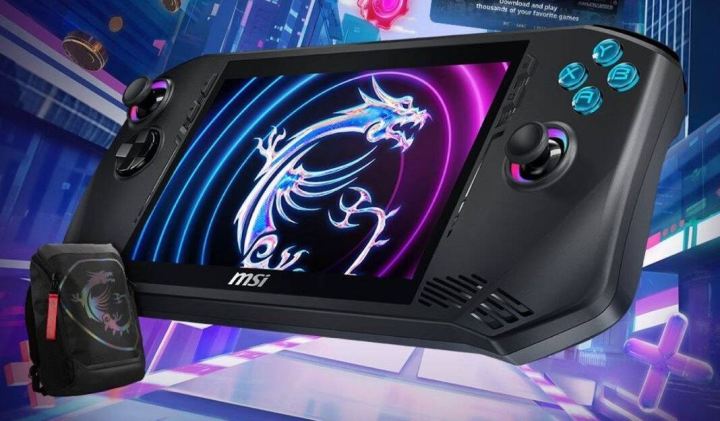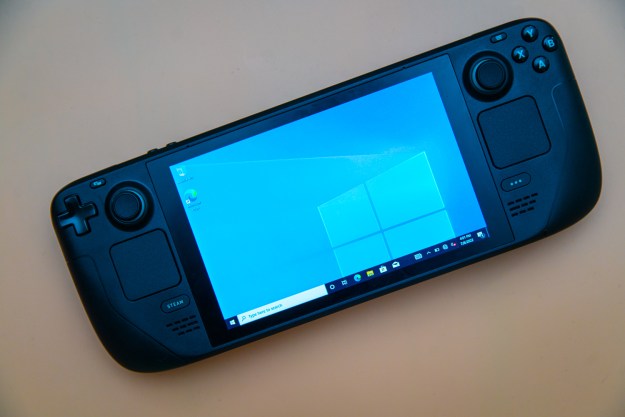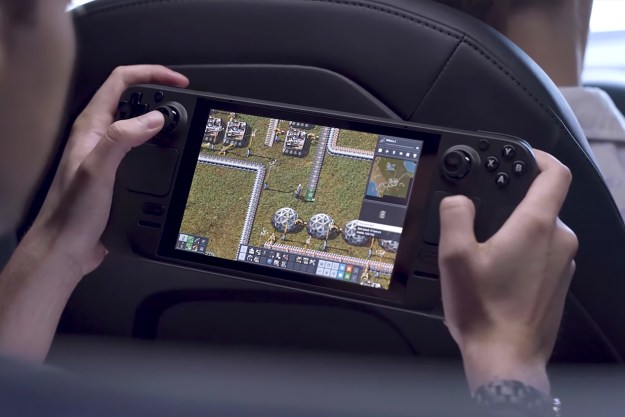
That didn’t take long. Less than 24 hours after the initial mysterious teaser, MSI’s first gaming handheld got leaked in its entirety ahead of its official launch during CES 2024. The handheld, which is set to compete against the likes of the Steam Deck and the Asus ROG Ally, is going to differ from many of its rivals. And it all comes down to the Intel Meteor Lake chip found inside.
Images of the new handheld appeared alongside Geekbench benchmarks earlier today. Dubbed MSI Claw, the portable gaming PC houses the Core Ultra 7 155H chip that comes with a total of 16 cores and 22 threads. That’s a major boost over the AMD Ryzen Z1 Extreme found in handhelds like the Lenovo Legion Go and the Asus ROG Ally. In Intel’s case, the cores are split due to the hybrid architecture of the chip, so we’re really getting six performance cores, eight efficient cores, and two new low-power cores.
AMD-based handhelds utilize RDNA 3 graphics, but Intel might be able to compete here too, thanks to an Arc Alchemist integrated GPU that sports 8 Xe-cores. According to VideoCardz, the iGPU can reach a clock speed of 2.25GHz. The GPU maxed out at 4.7GHz in the benchmark and has a base frequency of 3.8GHz. For a gaming console, the Core Ultra 7 155H is fairly power-hungry, with a base power consumption of 28 watts that can be boosted up to 115W. This bodes well for its performance, but could be detrimental to its battery life. We tested Intel Arc graphics recently on the Acer Swift Go 14 and were impressed by the performance jump over the previous generation of Intel integrated graphics.
MSI Claw (Handheld)https://t.co/oeAYDmu5Bvhttps://t.co/CA5c7Jn4JA
— Everest (@Olrak29_) January 5, 2024
As for the handheld itself, the leaked image shows us a device that’s similar to all the other portable PCs that came out in the last year, with a standard button layout and seemingly no trackpad. This is a Windows handheld, so it won’t have its own operating system the way the Steam Deck does, but that should come as no surprise. It will stand out from the rest by offering 32GB of memory, though, which could be nice for some games, but shouldn’t be a requirement for most titles.
In the leaked benchmarks, the MSI Claw scored 2,403 in a single-core test and 11,543 in a multi-core test. This puts it quite a bit ahead of the Ryzen Z1 Extreme, which averaged 2,240 and 9,645 points in single-core and multi-core, respectively. However, once we get more results for MSI’s Claw, the scores might even out more.
The fact that MSI is joining the fray with a handheld of its own is not at all surprising, but the use of Intel Meteor Lake is quite telling. AMD has had a monopoly on the budding gaming handheld market up until recently, but a big player like MSI betting on Core Ultra shows that this is truly a new era for Intel. It’s hard to say whether Meteor Lake or Ryzen Z1 Extreme will come out on top, but the specs alone tell us that the competition will be fierce.
Editors' Recommendations
- Nvidia is reportedly ‘worried that it’s missing the boat’
- MSI Claw handheld hands-on: it’s more significant than you think
- Why the most powerful laptops of 2024 might not use Intel’s latest chips
- This Intel gaming handheld could give the Steam Deck a run for its money
- There’s a new ROG Ally competitor, and it’s even more portable




